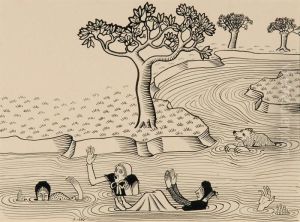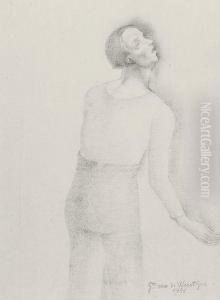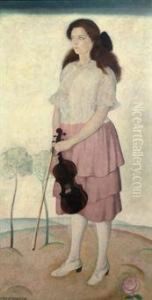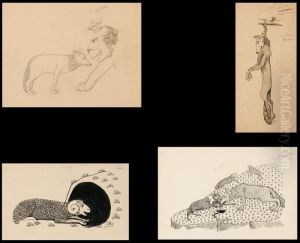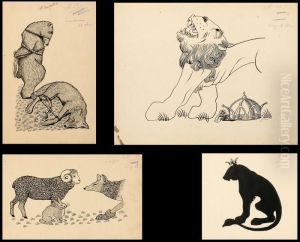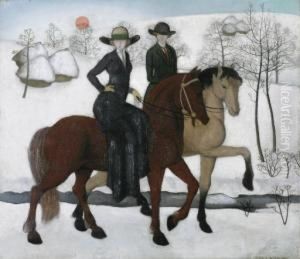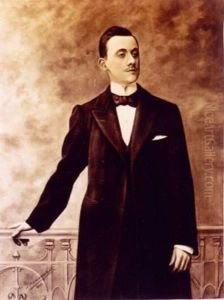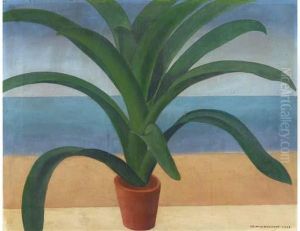Gustave Van De Woestijne Paintings
Gustave Van De Woestijne was a Belgian painter, born on August 2, 1881, in Ghent. He was part of a prominent artistic family; his brother Karel Van De Woestijne was a well-known Flemish poet. Gustave studied at the Royal Academy of Fine Arts in Ghent, where he was influenced by Symbolism and the works of the Pre-Raphaelites. His early work was marked by a mystical and introspective quality, often featuring religious themes and a distinctive use of color and form.
In 1900, Van De Woestijne moved to the village of Sint-Martens-Latem, joining a group of artists who would become known as the Latem School. These artists were known for their exploration of spiritual and rural themes, and Van De Woestijne's work from this period reflects a similar focus. His paintings often depicted the simple lives of peasants, characterized by a solid sculptural form and a subtle yet expressive palette.
During World War I, Gustave Van De Woestijne, like many of his contemporaries, left Belgium and lived in exile in Wales and then in England. This period was productive for him, and his work evolved to include more secular and intimate subjects, including landscapes and portraits.
After the war, he returned to Belgium and continued to paint, teach, and exhibit his work. In the 1920s and 1930s, Van De Woestijne's style became more classical, influenced by the Renaissance painters, yet it retained a modern sensibility. He held a professorship at the Higher Institute of Fine Arts in Antwerp from 1930 to 1945.
Gustave Van De Woestijne's health began to decline in the mid-1940s, and he passed away on April 21, 1947, in Uccle. Throughout his career, he was lauded for his ability to infuse Flemish tradition with a modern spirit. Today, his works are considered an important part of Belgian art history and are displayed in various museums and collections across Belgium and beyond.
